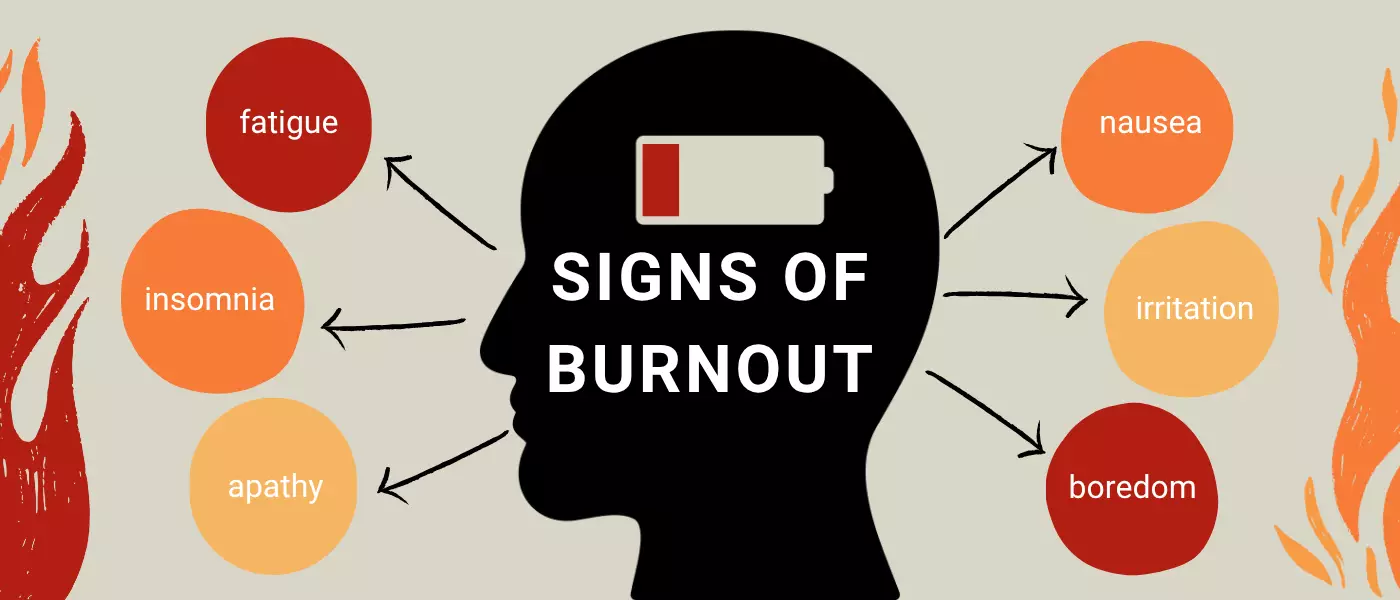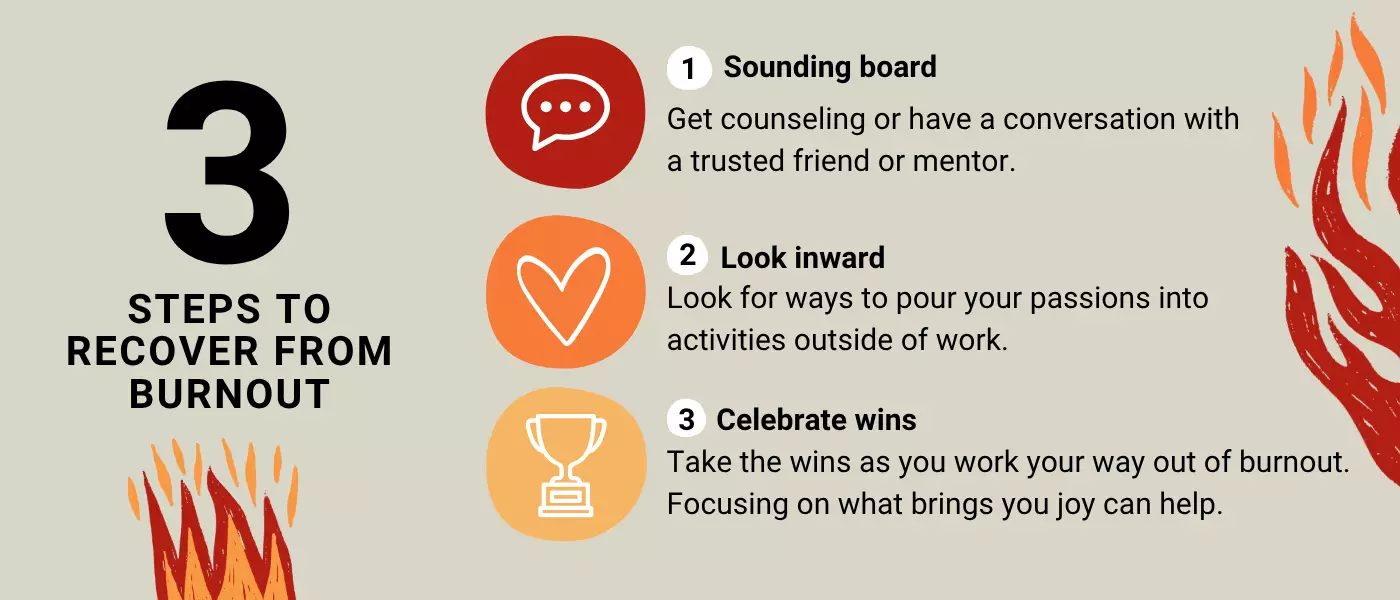How to recover from burnout

Written by Stephanie Hoselton

Reviewed by Christina Neider, EdD, Associate Provost of Colleges

As seen in Alumni Chronicles Magazine.
If there’s one unifying experience across humanity, it may well be burnout.
According to Samantha Dutton, PhD, an associate dean of UOPX’s College of Social and Behavioral Sciences, everyone experiences burnout at some point.
“Burnout is very real, and people do experience it,” she says. “They [just] might call it something else.”
So, how do you recover from burnout if you have it? Check out these steps.
What does burnout look like?
If you want to know how to recover from burnout, you have to first understand what burnout is. Some universal signs are:
- Operating on autopilot
- Feeling unfulfilled at work
- Letting frustrations from work seep into your personal life
- Making regular or increasing mistakes at work
The last of these can be tricky to assess. “They could be little mistakes like you missed a meeting or you forgot to turn in the report on time,” Dutton says. “Then they get worse, and you start maybe getting into trouble at work.”
Things escalate when you stop caring. That, Dutton says, is the worst part.

Steps to recover from burnout
If any of this sounds familiar, take heart! You can come back from burnout, and it starts with self-reflection.
Dutton recommends asking yourself questions like, “Why did I get this job? What did I initially like about the job?”
Even if your answer ties back to salary, it’s something, Dutton says. You’re looking for a spark amid the debris of discontent.
Once you identify that bright spot, explore further. “Look for the positivity in that,” says Dutton. This revelation might be the guiding light for discovering a new career field or simply restructuring your day-to-day duties.
From there, explore the following.

1. Find a good sounding board
While you might own your burnout, it’s not a license to quit your job, at least not immediately. As Dutton acknowledges, “You might not be able to do that. You have a house payment, mouths to feed, health insurance.”
This doesn’t mean you have to stay perpetually burned out and unhappy until you get fired, though. Instead, Dutton advises getting counseling or at least having a conversation with a trusted friend or mentor who can help you see outside of yourself and past the pain.
“Sort it out with someone who’s not emotionally attached to your situation,” she says, “because you’re very myopic. You can only see the pain and not the whole picture.”
If counseling and conversations aren’t an option, try a self-help book or an app. These tools are readily available and can also help you see past the immediate discontent.
2. Look inward
Next, ask more questions. Reflect on prompts like, “What did you used to do for fun?” Dutton did this during the COVID lockdowns. She loved playing the clarinet in high school and decided to revisit it. As it turned out, her band days were firmly behind her — but trying it helped break her out of her rut.
Similarly, look for ways to pour your passions into activities outside of work, whether that’s reading a book after hours, learning to paint wildlife or volunteering in a capacity that increases gratitude for your own situation.
“You don’t have to go to the food bank because you have a job,” Dutton says. Those morning hours spent boxing food might just bring a new perspective when you log in to work that afternoon.
3. Celebrate the small things
Most importantly, Dutton says it’s important to take the wins as you work your way out of burnout. “Know that you’re not the only one who’s experiencing this,” she says. By focusing on what brings you joy and working toward a different outcome, you just might find yourself on the other side of burnout.
Career resources to help you recover from burnout
Need more help as you figure out how to recover from burnout? University of Phoenix equips its students and graduates with the following resources to help them on their professional paths.
- Career Services for Life® commitment: Available to UOPX students and graduates, this offering comprises complimentary career coaching, including guidance on how to build a personal brand and write a resumé.
- Free career resources: Browse a range of downloadable guides and templates to help you optimize your LinkedIn® profile, get ready for a job interview and write a resumé and cover letter.
- Career With Confidence™ newsletter: Get career insights every week via UOPX’s LinkedIn newsletter.
LinkedIn is a registered trademark of LinkedIn Corporation and its affiliates in the United States and/or other countries.

ABOUT THE AUTHOR
Stephanie Hoselton has always enjoyed a good story. She gained an English degree from Texas A&M University with the plan to teach or write. As life happens, she fell into recruiting and didn’t look back. Stephanie spent over a decade in agency recruiting, placing candidates at SAP, Verizon and across financial services and healthcare. She started in Talent Acquisition with the University of Phoenix in 2021. She loves hearing candidates tell their career stories and sharing the story that is University of Phoenix.

ABOUT THE REVIEWER
Christina Neider is the associate provost of colleges and former dean of the University of Phoenix College of Social and Behavioral Sciences. Neider’s career spans more than 30 years in academia, healthcare and the U.S. Air Force. She has held several academic leadership roles at University of Phoenix, and she is the Vice President of membership for the Arizona Chapter of the Healthcare Information and Management Systems Society.
This article has been vetted by University of Phoenix's editorial advisory committee.
Read more about our editorial process.



